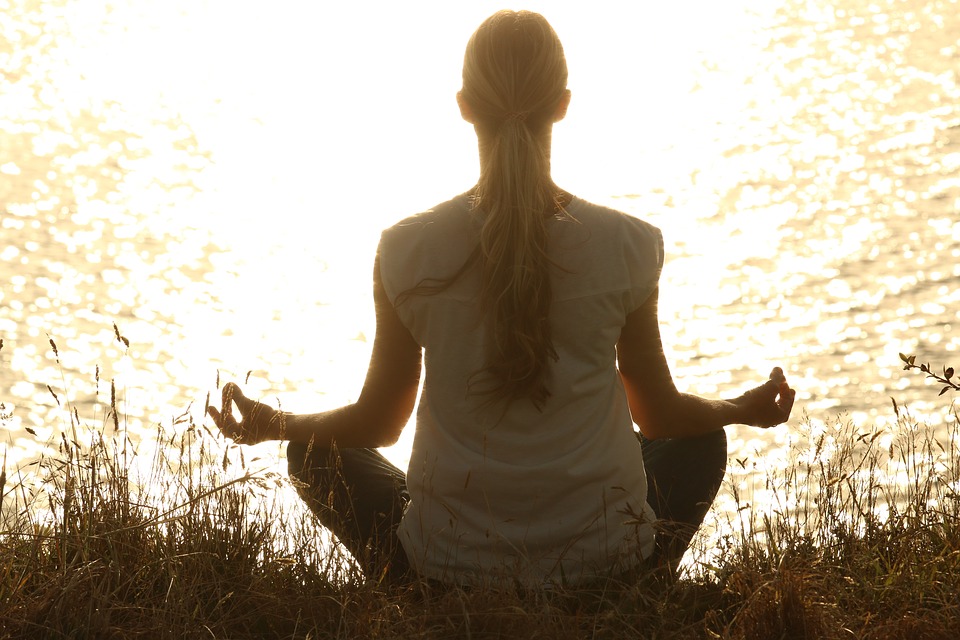Doctors are now recommending meditation as a treatment for everything from stress to heart health, and Vedic meditation is one of the techniques that everyone is talking about. What exactly is Vedic meditation? Is it just one of those fancy prefixes to add another layer of the exotic to what is essentially a simple practice of letting your thoughts run freely? You know that we have already covered different types of meditationhere on the blog. And we also have written about deep breathing exercises and their extensive range of benefits. Do they work in harmony with each other? Is that what Vedic meditation is all about, because think Vedic, and you will likely picture a Hindu sage or rishi by the riverside, inhaling and exhaling softly without causing a ripple.
Is there a bridge between the two? Well, yes and no. Meditation techniques fall into two broad categories: one requires you to contemplate on a thought, and the other requires you to concentrate on a thought. Contemplative meditation is usually one where you contemplate or reflect on something to arrive at its deeper meaning. Sometimes, this could also be a guided meditation as you visualize in your mind the thoughts, eyes closed, that the master will gently vocalize. Deep breathing meditation is one of the concentrative meditation techniques where in you train your mind to focus on one thing: your breath. Other focus points might include a thought, a visual aid, or allowing your thoughts to form and go without engaging with them.
Where does Vedic meditation fall on this spectrum? You could roughly equate Vedic meditation with transcendental meditation, as also with mindful meditation, in that Vedic sages are known to have transcended their thinking faculty to reach higher spiritual planes. And if you would like to practice Vedic meditation, you need neither a yoga mat, nor a master to guide you, nor any special place or time to perform it. That is the beauty of Vedic meditation.
First, you should know what it is not. Vedic meditation is not accompanied by bells and sounds. It is not a monastic technique that requires you to renounce the world as you know it, leaving society far behind to prepare to ascend spiritually. Vedic meditation does not require you to practice vegetarianism or veganism as one of its diktats. It does not require you to continually chant ‘Om’. ‘Empty your mind of all thoughts’ is something you would have heard in a meditation class, and we all know it’s easier said than done. The core principle of Vedic meditation is to help free your mind from the shackles of either remembering the past or projecting into the future. All you need to do is allot a few minutes everyday to this practice and sit comfortably, close your eyes — and just be.
From Meditationplex.com: “What we’re doing is something called ‘effortless transcendence.’ It’s in a completely different category of its own. We’re not trying to make the mind settle down. We’re just allowing it to spontaneously do so. We’re not thinking about thinking, we’re learning to transcend thinking.
Vedic meditation is a very effortless and natural form of meditation that you simply do sitting comfortably with your eyes closed: 20 minutes in the morning, and 20 minutes in the evening. What were actually learning to do with this technique is to transcend activity, to basically de-excite the mind and take it into a very settled state.”
The technique can involve learning a mantra, and each participant or attunee is usually given their own mantra. However, repetitive chanting of the mantra is not practiced. Here’s what the Ben Turshen techniquesays about this.
“A key feature of this technique is that it does not involve concentration, forced repetition or ‘chanting’ of the mantra. It also does not involve the student learning how to develop a way of paying attention to or monitoring thoughts or activity, as is the case in some other types of mediation. It is effortless, enjoyable, and requires no focus. Due to these attributes, Vedic Meditation can be practiced successfully by anyone, without a lengthy or complex learning process.
So go ahead and get comfortable. You can choose to attend a seminar or two to learn this practice, but honestly, all you need is you and some quiet time.

